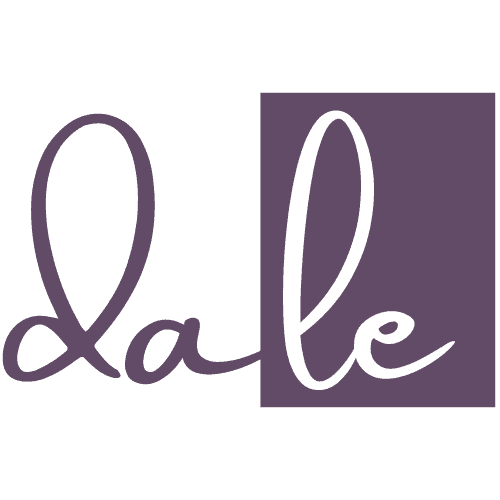I really wanted to start this with an AI-ish phrase about the fast-paced world we live in and how many of us, myself included, reach for the keyboard rather than the pen when it comes to writing. But whether AI speeds things up, writes cr*p opening lines, or doesn’t quite obey your commands to write like you, nothing beats pen and paper for getting stuff out of your head.
It feels quietly revolutionary to pick up a pen and press it onto paper – especially when you have a gorgeous journal. The irony is not lost on me because I am typing this, but while writing this current book, I have handwritten a lot, and it has been a brilliant way to get all of that jumble of stories out of my head.
Perhaps you are one of ‘those’ who have relegated handwriting to shopping lists and birthday cards (maybe not with Moonpig), dismissing it in the face of typing efficiency. But we’ve lost something wonderful in our rush towards digital productivity, something that could transform not just how we write our non-fiction books, but what we discover in the process of writing them.
Writing with a pen (you remember pens) is about accessing a different kind of thinking, a slower wisdom, a more intimate relationship with our thoughts. When we write by hand, we’re having a conversation with our wild words, allowing them to evolve and deepen in ways that typing simply cannot replicate.
As an aside, it’s my birthday in December and I love pens and journals (bullet ones)…
My process for creating a book involves using my creativity. Of course, I use AI, but as a creative brainstorming partner. Putting pen to paper, whether scribbling on a big roll of brown wrapping paper to create a timeline, mind mapping, or writing in a journal each day to get the grey matter moving, is magical.
I work with clients as a non-fiction book mentor and facilitate Write from the Wild writing workshops. In both these settings, I’ve watched writers rediscover the power of handwriting and see how it transforms their relationship with themselves and their content. Writers who incorporate handwriting into their process often report breakthroughs in clarity, authenticity, and creative flow that they couldn’t achieve through digital writing alone.
The Neuroscience of Pen and Paper
It might seem hackneyed to quote how brain research reveals that handwriting engages our minds in ways that typing cannot. But I think it’s worth remembering that when we write by hand, we activate multiple neural pathways simultaneously:
Enhanced Memory Formation: The physical act of forming letters creates stronger memory traces than typing. We remember better what we write by hand, which means deeper engagement with our ideas.
Increased Creative Activation: Handwriting switches on the brain’s attention filter, the reticular activating system, helping you focus more deeply and think more creatively. This is why insights often emerge during handwritten journaling that don’t surface during typing. I know when I type like I am doing now, it’s like I am racing forward, whereas when I write by hand, I pause more.
Slower Processing, Deeper Thinking: The slower pace of handwriting makes us more thoughtful about word choice and sentence structure. We can’t brain-dump as quickly, so we’re more selective and intentional.
Cross-Lateral Brain Engagement: The complex motor skills required for handwriting engage both hemispheres of the brain (we truly are whole-brained), creating conditions for creative problem-solving and insight generation. Isn’t it interesting how we take handwriting for granted as simple when it involves lots of moving parts? Think of it as conducting an orchestra.
Emotional Integration: There’s something about pen on paper – the scratch, the slowness, the rhythm, that pulls emotion to the surface. Handwriting invites you to feel as you write, creating a deeper, more honest connection to your words.
I’m sold. What about you?
The Intimacy of Ink
There’s an intimacy to handwriting that digital writing can’t replicate. When you write by hand, there’s no screen between you and your thoughts, no autocorrect changing your words (f*ck off Grammarly). It’s just you, your pen, and the blank page in direct conversation. And, ok, you may have blank page phobia. If you do, I invite you to write one word and leave it for the day, come back later and see what spills out. In fact, I have lots of ways to help you write on that funny stuff called paper.
This intimacy creates several benefits for nonfiction writers:
Authentic Voice Emergence: Without the temptation to edit constantly or the polish of digital text, your natural voice emerges more readily in handwritten work. I love this part where your raw words tumble out – if you trust them enough to emerge. Trust features a lot when it comes to committing to paper.
Reduced Self-Censorship: The temporary nature of handwritten drafts (knowing you’ll type them later) reduces the pressure to write perfectly, leading to more honest, spontaneous expression. When I write stories by hand, I rarely replicate them just as they are in my journal because they are uncensored. Who wants to read all of your mind mush in a book? It is, however, a fantastic way to get started.
Physical Connection to Ideas: The tactile experience of writing creates a physical memory of your thoughts, making your ideas feel more real. This is why I love the timeline exercise I teach; it’s like being in a creative scribblers’ heaven.
Mindful Composition: The deliberate pace of handwriting encourages more mindful word choice and sentence construction. Without the bloody annoyance of Mr G, you can start to choose your words, not what something else thinks is perfect.
The Handwritten Draft Process
For non-fiction writers, handwriting will never replace typing. That would be bonkers. Can you imagine writing 40,000 words for your book in your best handwriting? But it certainly enhances and enriches the digital writing process. Here are a few ideas to ponder:
The Handwritten Outline: Instead of creating outlines on the computer, try sketching your book structure by hand. Use different coloured pens, draw arrows and connections, and create visual maps of your ideas. This spatial, visual approach often reveals structural insights that linear typing misses. Go and buy some Post-it notes too – I love these.
Morning Writing: I scribble a few ideas in the evening before heading off to Slumberland and writing masses about whatever needs to arise in the morning. You can write about your book ideas, struggles with ideas or content, and hopes for your readers. Often, solutions and insights emerge through this process.
Handwritten Chapter Sketches: Before typing each chapter, spend time handwriting a rough sketch of what you want to cover. Don’t worry about perfect prose – explore the territory by hand first. Be messy and have fun.
The Handwritten Response: When you’re stuck explaining something, write a handwritten letter to an imaginary reader struggling with this issue. The informality and intimacy of letter-writing often unlock clearer, more accessible explanations.
Reflection Journals: After each writing session, write for five minutes by hand about what worked, what didn’t, and what you want to happen next. This reflective practice often provides insights for future writing sessions.
The Tools of the Trade
I am a big fan of the right pen, paper, post-its, types of journals and even brown wrapping paper. The right pen and paper can make your handwriting experience much more enjoyable:
Pens: Find a pen that feels good and flows smoothly across paper. Some writers swear by fountain pens for their fluid feel, others prefer gel pens for their smooth consistency, and some find that basic ballpoint pens work perfectly. The key is finding what feels comfortable for extended writing sessions. I have a Waterman, a Parker and a particular type of BIC I get in Lidl.
Paper: The texture and quality of paper can seriously affect the experience. Some writers prefer lined paper for structure (noooo), others like blank or bullet journal pages for freedom (oh yes). Graph paper (omg no) can work for visual thinkers who want to create diagrams and connections.
Notebooks: A dedicated notebook for your book project can become a powerful psychological tool. Choose one that feels special but not so precious that you’re afraid to make mistakes. I love Stationery Islands’ bullet journals.
Environment: I talk a lot about getting your environment right. I have had many writers suddenly find they can write when the space supports them. The physical comfort of handwriting matters more than typing, because the process is inherently more physical. This is sooooo important.
Handwriting for Different Nonfiction Challenges
For Writer’s Block: When you’re stuck, try switching to handwriting. The change in medium often breaks the mental pattern, causing the block. The slower pace can help you work through resistance rather than forcing through it.
For Voice Development: If your typed writing sounds stiff or overly formal, try handwriting sections in a more conversational tone. The informality of handwriting often helps writers access their natural voice.
For Complex Ideas: When dealing with complicated concepts, handwriting allows for more visual thinking. You can draw diagrams, create mindmaps, and use spatial relationships to work through complex ideas.
For Emotional Content: If you’re writing about personal experiences or sensitive topics, handwriting can provide a gentler, more private way to explore difficult material before committing it to digital form.
For Authentic Examples: When searching for the right story or example, handwriting often helps writers access more personal, authentic material than typing. Yes and yes to this. I have been struggling with one of my chapters, and then scribbling in my journal, the stories magically emerged.
The Editing Advantage
One unexpected benefit of handwriting is how it improves your editing and revision process. When you transcribe handwritten work into digital form, you’re naturally doing a first edit. This transcription process allows you to:
Catch Awkward Phrasing: I am in full swing with my first edit. My process is to print off each chapter. I start by reading aloud, which helps identify sentences that don’t flow well. Then I make a god-awful mess, handwriting new parts and scribbling changes.
Improve Word Choice: The slower pace of transcription gives you time to consider better word options. And if you get stuck, grab a thesaurus.
Enhance Clarity: When you move from handwritten notes to typed text, gaps become visible. This translation phase helps you see where ideas need refining, where explanations are thin, and where your message wants more space to breathe.
Maintain Momentum: Transcribing handwritten notes into digital form keeps you immersed in your material, even on days when fresh creativity feels out of reach. It’s a powerful way to stay connected without starting from scratch.
I’m going to stop here for today. I have loads more I could say, but hopefully this is enough to get you reaching for your pen and journal and slowing it down…
Start here – write a sentence about your book by hand. Notice how it feels different from typing the same sentence. That difference – that tactile, personal, slightly awkward, beautifully human difference – might be exactly what your book has been waiting for.
Are you ready to write 40,000 words by hand? I thought not… But if you are thinking about that book again, connect with me, and let’s get the ball (point pen) rolling.














